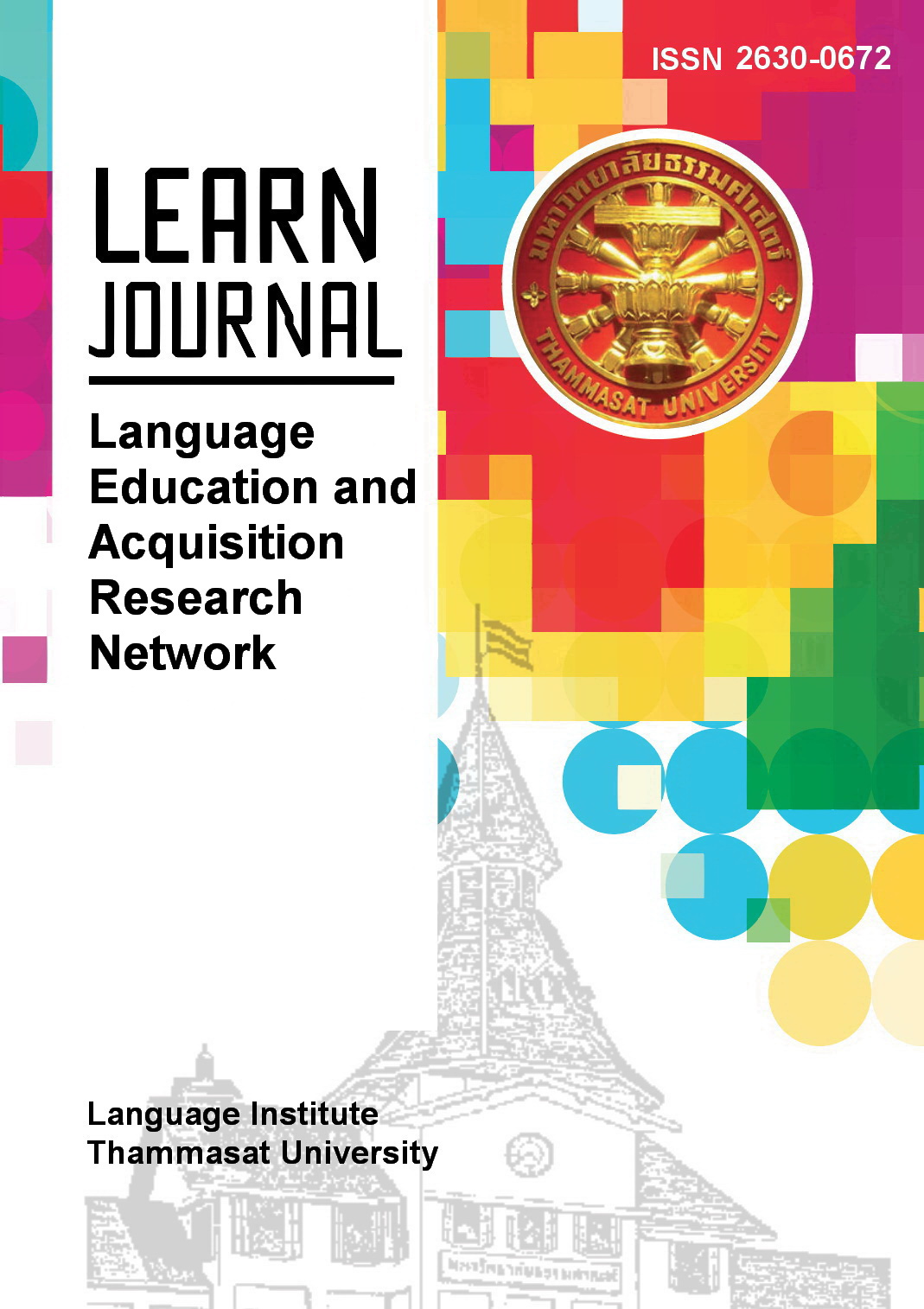The Theoretical Review and Practice of Multiple Intelligences in English Language Teaching
Main Article Content
Abstract
Learner diversity has been identified as a barrier to language learning and teaching. The purpose of this article was to conduct an analysis of the implementation of Multiple Intelligences (MI) theory in the field of English language teaching. MI theory, as introduced by Howard Gardner (1983), offers a new concept of intelligence, one that has led to a profound questioning of what we call "intelligence". As a result, he proposed an alternative view of intelligence that can be incorporated into the range of abilities, as well as the existence of nine intelligences that are distinct from one another. Several studies have explored the incorporation of MI theory in the realm of language teaching since it provides instructors with a variety of teaching strategies and enhances their ability to design teaching methods to better meet learners’ expectations. Moreover, it recommends multiple testing methods based on all the proposed intelligences to evaluate students’ learning, as not all intelligences can be measured using standardized tests. To implement the theory into pedagogical practice, educators should be cautious when it comes to truly understanding the theory and also be prepared to create a variety of teaching techniques in order to engage all intelligences.
Article Details
References
Abbassi, A., Hassaskhah, J., & Tahriri, A. (2018). The effect of teaching memory strategies on Iranian EFL learner’s vocabulary retention in terms of learners’ multiple intelligences. International Journal of Education and Literacy Studies, 6(2), 1-9.
Armstrong, T. (2009). Multiple intelligence in the classroom (3rd Ed.). ASCD.
Boonkongsaen, N., Nakaved, P., & Pranarach, M. (2020). The link between Thai EFL students’ multiple intelligences and use of vocabulary learning strategies. Journal of Studies in the English Language, 15(2), 130-153.
Boonma, M., & Phaiboonnugulkij, M. (2014). Why is an application of multiple intelligences theory important for language learning and teaching speaking ability? Advances in Language and Literary Studies, 5(5), 162-168.
Bruner, D. A., Sinwongsuwat, K., & Radic-Bojanic, B. (2015). EFL oral communication teaching practices: A close look at university teachers and A2 students' perspectives in Thailand and a critical eye from Serbia. English Language Teaching, 8(1), 11-20.
Campbell, L., Campbell, B., & Dickinson, D. (2003). Teaching and learning through multiple intelligences (3rd Ed.). Pearson Education Inc.
Cholsakorn, P., & Piamsai, C. (2022). The effects of differentiated reading instruction on reading comprehension and self-efficacy of Thai undergraduate students. Kasetsart Journal of Social Sciences, 43(3), 715-720.
Christison, M. A., & Bassano, S. (2005). Multiple intelligences and language learning: A guidebook of theory, activities, inventories, and resources. Alta Book Center Publishers.
Christensen, M. C., Horn, B. M., & Johnson, W. C. (2011). Disrupting class how disruptive innovation will change the way the world learns. McGrow Hill.
Dörnyei, Z. (2006). Individual differences in second language acquisition. AILA review, 19(1), 42-68.
Gardner, H. (1983). Frames of mind: The theory of Multiple intelligences. Basic Books.
Gardner, H. (2011). Frames of mind: The theory of Multiple intelligences (3rd ed.). Basic Books.
Hanafin, J. (2014). Multiple intelligences theory, action research, and teacher professional development: the Irish MI project. Australian Journal of Teacher Education, 39(4), 126-141.
Jones, E. (2017) One size fits all? Multiple intelligences and legal education, The Law Teacher, 51(1), 56-68.
https://doi.org/10.1080/03069400.2015.1082238
Klommek, J., & Saelee, S. (2019). Selected factors influencing nursing students’ self-perception of English communication skills, Asia-Pacific international university, Thailand. Development and Society, 20(1), 60-68.
McKenzie, W. (2005). Multiple intelligences and instructional technology (2nd Ed). International Society for Technology in Education.
Palmberg R. (2011). Multiple intelligences revisited. https://www.englishclub.com/download/PDF/EnglishClub-Multiple-Intelligences-Revisited.pdf
Pawlak, M. (2019). How teachers deal with individual differences in the language classroom: results of a study. Neofilologs, 52(1), 179-195.
Promtara, N., & Suwannarak, K. (2018). Thai students and teachers’ perceptions of learning and teaching English through the communicative language teaching approach. NIDA Journal of Language and Communication, 23(33), 23-42.
Sabiq, A. H. A. (2023). Investigating individual differences, school locality, and management on Indonesian students’ attitudes and motivation in EFL learning. LEARN Journal: Language Education and Acquisition Research Network, 16(1), 726-752.
Salem, A. A. (2013). The impact of multiple intelligences-based instruction on developing speaking skills of the pre-service teachers of English. English Language Teaching, 6(9), 53-66.
Sogutlu, E. (2018, September 14-15). Multiple intelligences and foreign language learning: Possible relationship. Proceedings of the 3rd International Conference on New Findings in Humanities and Social Sciences, Brussels, Belgium. http://www.doi.org/10.33422/3hsconf.2018.09.01
Suksawas, W. (2018). The study of the genre-based approach and EFL students journalism writing. International Journal of Business and Society, 19(S2), 235-248.
Suntornsawet, J. (2019). Problematic phonological features of foreign accented English pronunciation as threats to international intelligibility: Thai EIL pronunciation core. Journal of English as an International Language, 14(2), 72-93.
Tiansoodeenon, M. (2022). Effects of multiple intelligences-based instruction on English language achievement and learner autonomy of Thai tertiary students. [Unpublished doctoral dissertation]. Thammasat University.
Tiansoodeenon, M., & Sitthitikul, P. (2022). Effects of multiple intelligences-based instruction on English achievement and learner autonomy of Thai tertiary students, The Journal of AsiaTEFL, 19(4), 1250-1266.
Watanapokakul, S. (2016). The perceptions and experiences of English teachers regarding large EFL classes. LEARN Journal: Language Education and Acquisition Research Network, 9(2), 199-219.


